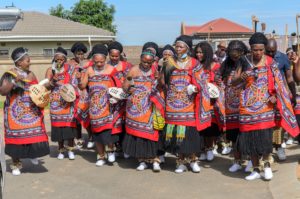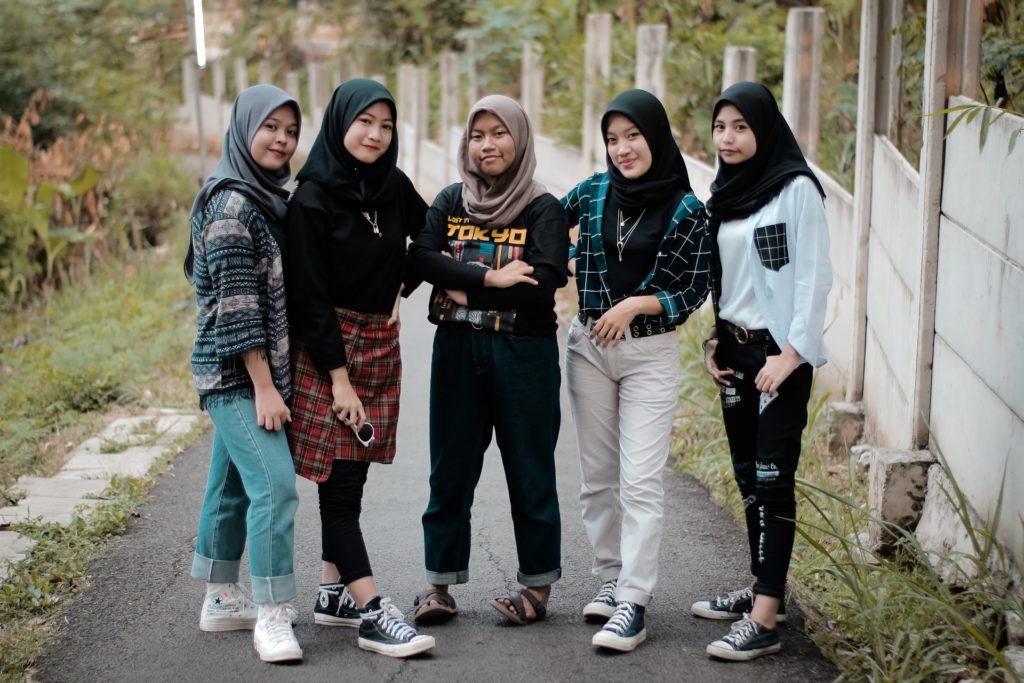Identity

How individuals or groups perceive and define themselves and others. Most clearly, it relates to how a people group looks at themselves primarily as individuals (I am, therefore WE are) or collectively as a larger group (We are, therefore I am).
Story: Lending the Borrowed Ladder
Gregory: Hey, neighbor, I came to get my ladder back. I need to use it for some work in my garden today.
Ahmed: Oh, I’m sorry. I actually lent it to my cousin, who needed it urgently.
Gregory: What? Did you lend my ladder to someone else without even asking me first? That’s not cool.
Ahmed: I’m sorry. I didn’t think it would be a problem. In my culture, we often share things with our family and friends. It’s a way of building relationships and showing support.
Gregory: Well, in my culture, we value our personal property and don’t like it when people borrow things without asking. It’s a matter of respecting each other’s boundaries.
Ahmed: I’m sorry for not asking you first. I’ll make sure to ask for your permission next time. But please understand that for me. Sharing is just natural for us.
Gregory: I get that, but it’s still my ladder, and I have the right to decide who uses it. I don’t want it damaged or lost because someone else borrowed it without my knowledge.
Ahmed: I assure you my cousin is responsible and will take good care of it. But I do apologize for not asking you first.
Gregory: Okay, I appreciate your apology and understanding. But please remember to respect my personal property in the future. I worked hard to buy that ladder and want to ensure it lasts long.
Ahmed: I understand entirely and will ask for your permission next time. Thank you for being patient.

Examples from the Bible
- When the Israelites conquered the promised land, Joshua held a speech. Ultimately, he affirmed that he and his family would stay faithful to the Lord (Joshua 24:15).

- In the Old Testament, the Jews understood themselves not as individuals but as God’s people (in contrast to the non-Jews “goyim”). In the New Testament, Peter applies this identity as God’s chosen people to the church, consisting of people from very different nations but with one identity (1 Peter 2:9).
- When the Philippian prison guard believed Paul’s message, not just he but his entire household believed and were baptized at the same night (Acts 16:32-33).
Real-life examples
- While in most cultures, people strongly identify with their family, in many Western nations, young people identify with their peers rather than their relatives. The individual is more important than the group. In the Philippines, students often express their goals as supporting their family financially and giving back to their parents even if they had not been treated well at home. Something unthinkable in an individualistic society where everyone fights for themselves.
- In Afghanistan, fathers often barter their daughters in marriage for financial gain. This is done in a group setting with all the men present to witness and affirm the transaction. To bring Kingdom transformation to this practice and change the view of girl children from property to respect as valued persons also take collective processing and agreement. In a northern province, the local jirga took a week of listening to messages that showed God’s design for family and loving relationships. After lengthy discussions, they abandoned this practice and allowed their daughters to have a voice in who and when they would marry. No one man/father would have taken that step without including the entire village.
- In many group-oriented societies, students do not like to give an answer in front of the class if they are unsure if their classmates agree. They are rather wrong with the whole class together than being right alone.
Relevance

Identity is shaped through socialization and the influence of social institutions like the family, religion, cultural norms and traditions, the education system, and media.
Identity relates to a person or a group and how they relate to one another. In a HOR context, the group is most important in processing any message or instruction. “I identify with my group. I relate to ‘us’ and not necessarily to ‘them.’” In a LOR context, the individual forms new knowledge and convictions independently. The group is a minor consideration.
The anthropologist Michael Rynkiewich explains this by the fact that in a LOR context, many relationships are made with different persons, each building only on a single strand like kinship, economics, religion, or politics. Losing one relationship is only affecting one aspect of life. In HOR cultures, fewer relationships tend to be made, but each builds on multiple strands. Losing one relationship has a much more significant impact on the individual.1
The missiologist Christopher Wright2 argues that Paul (Colossians 1:15-20) moves from cosmic redemption to personal salvation (the opposite direction of: Crist dies for your sins…). In the passage, Jesus is presented as universal (the phrase “all things” is used 5x) creator, sustaining, and reconciler before moving to the personal application. The same pattern can be seen in the Great Commission. Jesus claims “all authority” (Matthew 28:18) before sending the disciples (2023, chap. 8). The motion of personal salvation first is a LOR concept from an individualistic culture.
David Watson describes the community as a powerful tool in developing new churches and contextual theologies because groups tend to correct each other.3
In group-oriented cultures, the relationship to the group (being an insider) is paramount for acceptance of the message and can be more powerful than the message itself.4
Orality preference continuum
This trait can be clearly shown as two opposites on a continuum.
Very HOR groups, on the other hand, will consider the community above their own desires. They can hardly function without the group and highly depend on the community.
Very LOR people will put themselves above the group. They will study alone from books and be as independent as possible.
Very few people would fit into this dichotomy. Instead, most are somewhere between these two poles. Still, we can clearly see HOR people’s tendencies toward group orientation. The following table shows nuanced how identity is perceived on this continuum.
| Very high | High | Low | Very low |
|---|---|---|---|
| My opinion is irrelevant. “I will study what my family expects me to study.” “I will marry the partner my family chose for me.” | The opinion of my people is most important, but in the end, I have to make the decision. | My opinion counts, but I may ask people respected in my social circles for advice. | My opinion is most relevant. “I study what I like.” “Only I can finally decide who my partner will be.” |
| Decisions are made as we come to our conclusions. | We come to a decision as we process the importance, and I do my best to align with that. | Decisions are made as I have considered what is best and what others think. | Decisions are made as I have considered what is best. |
| I believe because of my family or the perceived values placed upon me by my community. | My family strongly influences my faith convictions and expressions, but I must follow the convictions of my heart. | I am the primary influencer of my faith and convictions. Still, in the process, I value what my family and community may advise. | I believe what I do because it was my decision for my life. Everyone should be free to decide about their own faith. |
| Consensus. What is best for “us”? | Concerned about what I think about an issue, but in the end, what really matters is “my group thoughts, reasons, and conclusions.” | Concerned about how the rest of my group thinks about an issue, but in the end, what really matters is “my thoughts and reasons.” | Democracy. What is best for me? |
What has been discovered?
The most well-known study on culture and identity distinguishes variations of collectivistic cultures from individualistic ones. Those gravitating toward the collectivistic end of the spectrum discuss things together in making decisions, learning, and relating to one another.5
The self-believed identity of a group often comes from dominant influencers. Sometimes that comes from colonists (not just Western/Europeans) or the more economically prevalent peoples. Those with lower power and status see themselves as inferior, with their language, artifacts, traditions, clothing, arts, and even food.6
The value and intensity of kinship shape how we function in a community.7 The more robust the kinship, the more a person is bound to the group as “who they are.”
Identity development evolves in and through our social-cultural context.8
In some contexts, the “strength of weak ties” can be more powerful than close relationships.9
Additional resources
- Discover more about Identity through our training materials at Orality.Academy!
- The Smallfoot movie is a treasure box for anthropology and shows the role of identity in a group-oriented community in a funny way.
- The BibleProject shows how Public Reading of Scripture is important for the shared identity of communities of believers.
- In her book, African Hermeneutics, Elizabeth Mburu emphasizes the importance of considering the African worldview’s communal identity when interpreting the bible.
- Michael Rynkiewich, Rynkiewich, Michael A. Soul, Self, and Society: A Postmodern Anthropology for Mission in a Postcolonial World (Eugene, OR: Cascade Books, 2011), 70–72. ↩︎
- Christopher J. H. Wright, The Great Story and the Great Commission: Participating in the Biblical Drama of Mission, Acadia Studies in Bible and Theology (Grand Rapids, Michigan: Baker Academic, a division of Baker Publishing Group, 2023). ↩︎
- David L. Watson and Paul D. Watson, Contagious Disciple-Making: Leading Others on a Journey of Discovery (Nashville, TN: Thomas Nelson, 2014), 202–4. ↩︎
- Melba Padilla Maggay, Pahiwatig: Kagawiang Pangkomunikasyon Ng Filipino (Quezon City: Ateneo de Manila University Press, 2002), 83. ↩︎
- Hofstede, G. Culture’s Consequences: Comparing Values, Behaviors, Institutions, and Organizations across Nations. London: Sage Publications, 1980; Hofstede, Geert, and Jan Hofstede. Cultures and Organizations: Software of the Mind. New York: McGraw-Hill, 2005. ↩︎
- Thong, Tezenlo. Colonization, Proselytization, and Identity. Palgrave Macmillan, 2016. ↩︎
- Lawson-Te Aho, Keri, and James H. Liu. “Indigenous suicide and colonization: The legacy of violence and the necessity of self-determination.” International Journal of Conflict and Violence (IJCV) 4, no. 1 (2010): 124-133; Lingenfelter, Sherwood G., and Marvin K. Mayers. Ministering cross-culturally: A model for effective personal relationships. Baker Academic, 2016. ↩︎
- Marcia, James E. “Identity in adolescence.” Handbook of adolescent psychology 9, no. 11 (1980): 159-187. ↩︎
- Wells, Karen. “The strength of weak ties: The social networks of young separated asylum seekers and refugees in London.” Children’s Geographies 9, no. 3-4 (2011): 319-329. ↩︎
